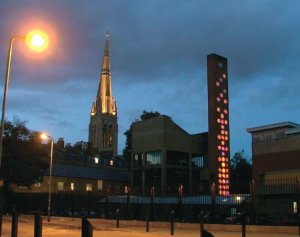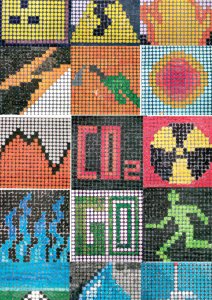
The eighth in a series of articles looking at the work of Creative Partnerships around the country, this issue looks at how creative practice in schools can enhance regeneration in communities.
Culture has long been associated with the successful regeneration of communities. Cities such as Glasgow and, more recently, Newcastle Gateshead act as high-profile examples of this, writes Anna Cutler. However, while much regeneration at a local level is often tied up in bricks and mortar, public artworks, and the physical building of cultural infrastructure, this provides just one part of the process, with the communities themselves providing the other. People without buildings may offer an inspiration ready to happen, but buildings without people can represent an inspiration never to be fulfilled. Getting regeneration ?right? means giving both places and people the best opportunity to succeed.
Sparking interest
To regenerate a community needs vision, ambition and time. Because Creative Partner-ships is concerned with sustainability and partnership working, it is well placed to work with organisations and individuals already involved in this process to give added value. Across the country it works closely with local authorities to take initiatives into schools and youth organisations, contributing to regeneration through investment in creative and cultural industries as well as providing cultural activities.
Such activities include small-scale projects that excite young people about their local architecture and public spaces or large-scale projects that span over years and explore the nature of identity and place through culture and creativity. This kind of work demands involvement from the youngest child with the smallest voice to prominent local stakeholders. As anyone who has worked with communities will know, nothing can surpass the act of bringing people together to create an event that allows people to work collectively and feel the unique thrill of presenting to those they live amongst. Cultural regeneration transforms attitudes, how people feel about themselves, and the place in which they live.
But are such activities enough for long-term impact in communities? Do they improve local resources and economies? In the past twenty years, the economy of Britain itself has changed. Industrial and manual work, the mainstay of the last hundred years, is in decline and the workforce has shifted towards ?thinking jobs? and a knowledge-based economy. If one were in any doubt of this, then the closure of MG Rover at Longbridge this year, set against the profit margins of e-Bay, comes as a salient reminder. In these terms, areas that once relied on heavy industry have found themselves transformed from prosperous and meaningful communities into areas struggling to regenerate for the contemporary world. How can Creative Partnerships make interventions that address these kinds of challenges?

Education leading
In ?The Creative Age?(1) the author identifies the need for education to play its part in the development of the knowledge-based economy, where the individual is required to apply their knowledge in a range of creative ways, as innovation is key to the economy. Is this the area where Creative Partnerships can offer a unique input? Since Creative Partner-ships schools exist in disadvantaged communities, it is in a position to address this question. Creative Partnerships is potentially part of the scaffolding that aims to help build a future workforce able to face the challenges of inevitable, ongoing change. To do so it embraces the process of creative learning, a process that responds directly to the need identified in ?The Creative Age?.
Creative Partnerships works with teachers, young people and creative practitioners to develop a set of learning skills that enables them (all of them from their different perspectives) to find effective approaches ?to apply their knowledge in a range of creative ways?. They learn to identify problems, think divergently, apply skills and take risks as well as developing the confidence to turn new ideas into something tangible. Our experience shows that working with cultural practitioners also encourages tolerance and diversity, crucial to so many developing communities and to their emerging identities.
If what is required of our current and future workforce is the ability to be flexible, imaginative, inclusive and inventive, then creative learning is a tool that enables this to happen. For Creative Partnerships, cultural and creative practices are perfect vehicles for delivering creative learning as they share the key elements outlined above. Through this practice we aim to develop people who are able to create meaningful lives and viable work in their new communities, people who are able to adapt to the kinds of knowledge-based industries to which our contemporary life is shifting. Clearly this is not a short-term objective and time will tell if our young people have been properly equipped to take on this task.
The work of Creative Partnerships attempts to draw all these strands of regeneration together, to develop young people for the future, to offer activities that generate community engagement and to create partnerships with the organisations, institutions and buildings in which they might flourish. It will never be the sole trader of change, but is a part of the process that recognises that creativity plays a crucial role in offering the best opportunity for success.
Anna Cutler is Creative Director for Creative Partnerships Kent.
t: 01843 294783;
e: anna.cutler@creative-partnerships.com
(1) The Creative Age, Tom Bentley, (Demos 1999)



